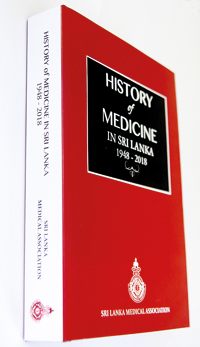Tribute to Sri Lanka’s unsung heroes in the health sector
View(s): Nearly all major achievements in health care in Sri Lanka were made possible by medical administrators, various medical officers working in the field, public health officers, nurses, midwives and other para-medical staff including laboratory staff working under very difficult conditions. We should not forget the medical personnel of the armed forces. The motherland’s gratitude must go to them in full measure even though their names are forgotten. They worked with the ideals of — “Riches I hold in light esteem, Lust of fame was but a dream that vanished with the morn.”
Nearly all major achievements in health care in Sri Lanka were made possible by medical administrators, various medical officers working in the field, public health officers, nurses, midwives and other para-medical staff including laboratory staff working under very difficult conditions. We should not forget the medical personnel of the armed forces. The motherland’s gratitude must go to them in full measure even though their names are forgotten. They worked with the ideals of — “Riches I hold in light esteem, Lust of fame was but a dream that vanished with the morn.”
This is the tribute that respected Anaesthetist Dr. Lakshman Karalliedde, based in London, England, paid to the ‘unsung heroes’ in the health sector at the launch of the ‘History of Medicine in Sri Lanka: 1948-2018’ held recently amidst a distinguished gathering at the Lionel Memorial Auditorium of the Sri Lanka Medical Association (SLMA) in Colombo 7.
Giving a glimpse at the pages of ‘History of Medicine in Sri Lanka: 1948-2018’ edited by former SLMA Presidents Dr. Iyanthi Abeywickrama and Dr. Palitha Abeykoon; retired Senior Consultant of the National Hospital of Sri Lanka, Dr. Philip Veerasingam; and himself, Dr. Karalliedde said that looking back upon or viewing retrospectively is the intent of a preview. “Our co-editors from the SLMA who kick-started this activity have expressed their thoughts in the appropriate sections. In essence, what has to be said has been written.”
He then went onto present his and Dr. Veerasingam’s thoughts by quoting author Virginia Woolf that “nothing has really happened till it has been recorded”.
Setting the backdrop, he stated that it was Dr. Uragoda’s epic published in 1987 that recorded what had happened in the field of medicine up to 1948. Since 1948, the expansion and extension of services associated with medicine have been exponential. It was considered useful or rather a necessity to document the achievements sooner than later, despite a comprehensive coverage being near-impossible within a limited period of time. However, if a rather long period is taken update, it is likely that the changes that took place during this period would be excluded.
“Collating the information from eminent contributors provided us with the opportunity to observe the tremendous commitment, dedication and relentless pursuit of individuals to enhance health care in Sri Lanka. They travelled across the globe to centres of excellence, often at their expense to learn techniques and skills, lobbied state officials and the private sector to construct buildings and develop specialized units, sought assistance and guidance from international collaborators and funding agencies to obtain equipment, technology, train staff and investigate states of ill-health,” said Dr. Karalliedde, adding that these are admirable and inspirational efforts and it has been a privilege to collate them albeit possibly with some omissions.
Looking back into the past, he painted images of how health sector personnel served in all parts of the country that were plagued by diseases such as malaria, typhoid, cholera, yaws, who infused children with severe diarrhoea and malnutrition with infusion sets made of rubber with a metal clips to control the rate of infusion, providing emergency care for potentially fatal conditions without the comfort of modern utilities such as tap water, electricity, sterilisers, telephones, computers and motor cars, to name a few.
He explained that they are aware of similar activities by the younger generation who are extending the boundaries of their specialties, providing training activities for professionals from all parts of the world. “Unfortunately, we were unable to obtain detailed information.”
The merits and demerits of the book would be decided by the readers, said Dr. Karalliedde, adding that some may fault the selection of specialties, contributors, content matter and the errors associated with printing. “We are aware that this skeleton provided has many deficiencies, deformities, dislocations or missing metatarsals or whatever — the task is over to you to correct the defects and add the muscles that would make Sri Lanka proud of their health professionals. We did our best to eliminate bias, prejudice and whatever damaging influences that prevail in our society during the whole activity. The sole objective was to pay a just tribute to Dr. Uragoda: If not, Sri Lanka’s rich heritage of developments would never have been documented.”
With the hope that the deficiencies would be corrected in the near future, as there is no lack of professionals of ability and competence amongst us, the main constraint being time, Dr. Karalliedde concluded with a quotation by Wilhelm Geiger, published in the foreword to the translation of the Chulawamsa that “not what is said but what is left unsaid is the besetting difficulty of Sri Lankan history”.


